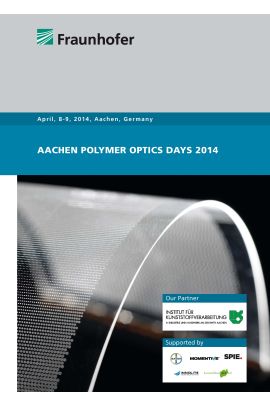LED’s open up new possibilities in lighting. Although most of the people are mainly
interested in the high efficiency and therefore the energy savings realized with LED’s,
mainly optical engineers and lighting designers are fascinated by the very bright but
small light source which – at least in theory – opens up completely new possibilities in
optical design. But these opportunities do not come for free – on the other side new
challenges have to be mastered, mainly in terms of the high brightness of the light
source itself, the hemispherical distribution of the direct part of the light, not to forget
topics like binning and kitting.
But how does the reality really look like ?
The author looks into the different aspects of LED lighting, covering the whole value
chain from the light source, the LED itself, to design and simulation possibilities of
optics, rapid prototyping and tooling of these optics, the production process and finally
the assembly of the complete luminaire. By means of concrete examples from real
lighting tasks, the author explains the challenges in detail and what has to be done to
overcome the problems still existing in professional LED lighting.
The speech follows the value chain, starting with the light source itself, showing that it
is still not a perfect light source – at least not from the perspective of an optical
engineer. Topics like inhomogeneous light emitting surfaces, size, multichip
arrangements, so called colour-over-angle aspects and others will be covered.
In terms of optical design and simulation, the focus is on lenses and waveguides and
the necessary adaptations of your light simulation program to master the new
conditions when working with LED’s.
When you have finished your optical design, then the real problems start, with either
the generation of good prototypes or the design and building of the tools. Based on
actual examples some of these challenges will be highlighted, for example rapid
prototypes, the data chain from the CAD system of the optical engineer to the
numerical control of the machines producing the inserts of the tools etc.
Even when the tool is ready for production, the journey has not yet reached it’s end.
The production process itself will bring up new problems, changes will have to be
made to the tools till finally the parts can be released for serious production. In this
chapter the author will explain how your optical design tool can help you to analyze
the gap between the optical design and the results achieved with the first parts out of
the mould.
Another aspect that will be covered during the presentation is the topic of materials for
lenses and waveguides. The different demands on these materials will be shown and
explained and the conclusion drawn that still the ideal material for LED optics does
not exist. There is further research and material development necessary to come to
materials which finally will do the job in a better way than today.
| Autor | Christian Brecher (Hrsg.) |
|---|---|
| Lieferzeit | 3-4 Tage |
| Gewicht | 0.6 kg |
| Erscheinungsdatum | 01.04.2014 |
Eigene Bewertung schreiben
Tagungsbände
Aachen Polymer Optics Days 2014
ISBN: 978-3-86359-204-2
Lieferzeit: 2-3 Tage
49,00 €
inkl. 7% MwSt.
Kurzbeschreibung
LED’s open up new possibilities in lighting. Although most of the people are mainly interested in the high efficiency and therefore the energy savings realized with LED’s, mainly optical engineers and lighting designers are fascinated by the very bright but small light source which – at least in theory – opens up completely new possibilities in optical design. But these opportunities do not come for free – on the other side new challenges have to be mastered, mainly in terms of the high brightness of the light source itself, the hemispherical distribution of the direct part of the light, not to forget topics like binning and kitting.
Auf Lager

